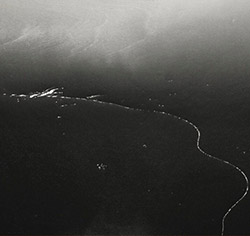
Zeena Parkins' most unique trait is, as is the surprising dichotomy of what your fiancés family expects from "vocalist" before your dumbass puts on Diamanda Galás after dinner: she isn't afraid to make and present something rough, glitched, inverted, outlandish, visibly animated, what your average citizen might call ugly, et cetera. That is, she flips and hacks at the beholden, precious, hella expensive instrument — associated with God's angels themselves — to produce a heterotopic carnival, one that continues to diversify as a creatively capricious overlay smothered on top of a wide range of academic training.
It's also her unflappable energy and physicality on stage and albums that, one would imagine, keeps Professor Parkins in business, from Brooklyn to Björk, Cage to Captiva to (Brian) Chase; Mori, Morris, Moore, and back to the original ringleader, Zorn. Left in the lab with a friend, she can get real micro, such as the flurry of circuits, answering machines and dolls come to life that is Triplicates (2019) with Jon "Wobbly" Leidecker; alone, she crafts gems such as No Way Back, a record with the force of Hendrix's live "The Star-Spangled Banner", evocative, sell-your-soul Blues, and bouts of reverb-soaked demolition.
Jeff Kolar's body of work extends from installations and unconventional podcasts around his Radius Project. His aesthetic is based in exploring the electromagnetic spectrum as a living force, and related projects examine the metaphysical relationship of time and radio (waves, static, anything passing through there), power consumption and how it plays with harmonic content, the energy flicker that happens when an FM station powers on. Also, he conducts academic and curious (read: fun) investigations of specific doorbells, phone booths and "single station smoke alarms."
This recorded version of Scale is the result of back-and-forth planning sessions between Parkins, Kolar and choreographer Jennifer Monson on the latter's bend the even. Outdoor rehearsals with two dancers inspired the music, which then served the dancers and the final multi-media performance in a Meta, circular time and space warp. The impetus for the music doesn't translate as a score where the visual component is needed, but there are some juxtapositions here that make sense with this context in mind (more on that in a sec).
The first track, "Prologue", begins with a long passage of swelling, bone rumbling sine waves moving in quasi-canon, with no harp in (plain) sight. What follows is a sophisticated test tone record in the manner of what every burgeoning audio mangler hopes to make by layering pure pitches into an elegant, simple exploitation of the building blocks of sound. Here it is, everyone stop trying.
Near four minutes, two faint plucks introduce a landscape of buzzing strings that is also fed into noise boxes to produce a crackling, seems-like-it's-coming-out-of-a-radio shadow a few seconds behind the performer. For "Hooking", the duo engage in a percussive texture hinged on a wispy gesture of Kolar briefly inhaling (punctuating with a hard glottal stop) into a CB microphone. This sound repeats, reverses, is lengthened and shortened, and is joined by someone rubbing objects against various surfaces.
Taking advantage of the vinyl format, the 21-minute B-side suite begins with a grounding, tonally centered (what your progressive parents would call "lush") waltzing harp arpeggiation that Parkins subtly expands over several minutes with very similar loops, switching them up slightly to break the metric sameness. A fog of hiss and occasional vocal blip pours from Kolar's gear, Parkins loops distort, and around the time you think you've had enough, the piece disintegrates and sinks into a passive swish of cricket song and granulated, "bells" and synthetic chimes that break into shards. From there, the duo bring in gritty "stomping through snow" Foley, and a whirling West Coast/Buchla synth line bopping around a deflating balloon. There are a few curious last bits, such as a few high glissandi that, though formed from scales attributed to 20th Century masters, cannot escape visual associations with, say, torchlight revealing an old foe's face, a mysterious idol in a cave or spooky clown doll in a Steven Spielberg movie. I love it.
Comments and Feedback:



More Recent Reviews, Articles, and Interviews @ The Squid's Ear...


|

